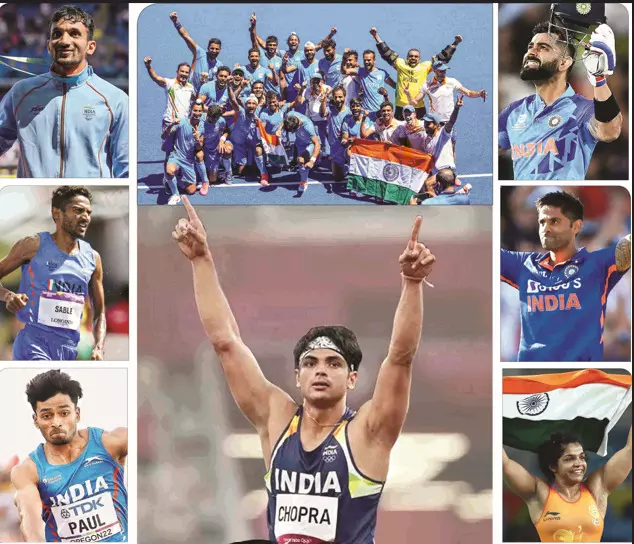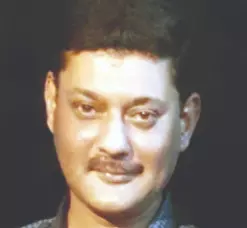Talking Shop: Killing with a string
It is not just an archer who wields a string to great effect and it is no sleight of hand. Sports is an acquired art, honed through work, sweat and genius ability

“Champions aren’t made in
gyms. Champions are made
from something they have
deep inside them—a desire,
a dream and clear vision.”
― Muhammad Ali
Around four decades back, a roly-poly middle-aged gentleman walked up to the Cricket Nets at Delhi’s Nehru Stadium and asked if he could turn his arm over. My coach concurred and asked me to take fresh guard. I wanted nothing more, for I could now show a team of gangly teenagers a trick or two from Rajeev’s arsenal. First loosener from ‘Uncle’. FOUR. His second loosener met with the same dire fate. FOUR. On an adrenaline high, I felt the third should go over the ropes, and it did. SIX. Uncle walked up to me: “Master, don’t hit agricultural shots.” I grunted, deciding to show him who was ‘agricultural’. He bowled and I stepped out. I was at the pitch of the ball, all set to send it over the ropes again, and to hell with agriculture. Oops. Uncle pulled some magic string and the ball just stopped coming to me; it all but went to him. India’s latest farmer Rajeev was BOWLED, egg on face.
Fast forward a year and now-eggless Rajeev was playing ‘A’ Division cricket at Delhi’s Khalsa College Grounds. A second Uncle showed up to play for the other team. Taking but a few strides instead of his familiar run-up, Uncle bowled. FOUR. Another few strides. FOUR again. I grinned, and this made Uncle walk up to me, ruffle my hair and say: “Ab dekhte hain (let’s see what you have got now).” Big deal, Uncle, I thought, as he took his full run-up and let loose. What the hell, where was the ball, for I didn’t even see it? It was in the right hand of the wicket-keeper, who was laughing himself silly, even as his left hand clutched a recently-uprooted stump. Farmer again, and BOWLED.
Uncles I and II were Bishan Singh Bedi and Kapil Dev. Bedi Sir, RIP—you are sorely missed
An abject lesson
It was a humbling (if not humiliating) experience, but today, I am the happier for it… for I realize the difference between the good and the great. That it is not just an archer who uses his bow-string to great effect, with no magician’s sleight of hand in play. Sports is a gift or an acquired art, or both, honed through years of hard work, buckets of sweat and a whole lot of genius. A bit of talent and lumps of chutzpah can never match up to class and humility. Uncles One and Two were in the latter class. You want to know about the former, the new farmer? Well, let’s not waste a Monday morning discussing the mediocre.
Instead, let’s discuss those who carry our flag and torch high, having mastered the art of threading the proverbial string. Things have moved beyond cricket—the world of Indian sports has changed beyond recognition and non-cricket sportspersons are the new stars. In no way does that mean that cricketers have lost their sheen, but top Corporate brands and fans have realized that there is life beyond cricket. Where are these green-shoot acorns turning fast into mighty oaks?
Well, they are all over the place now—they include boxing (Mary Kom); badminton (Saina Nehwal, PV Sindhu and Pullela Gopichand); athletics (Neeraj Chopra and Sunil Antil); wrestling (Ravi Dahiya, Sakshi Malik, Bajrang Punia and the Phogat sisters); kho-kho (Deepak Madhav and Nasreen); kabaddi (Gold Medallists at the Hangzhou Asian Games); gymnastics (Dipa Karmakar); soccer (Baichung Bhutia and Sunil Chhetri); Formula One racing (Narain Karthikeyan); chess (Vishwanathan Anand); and more. This is an illustrative list, so do bear with me—we owe so much to so many more for making a difference at great personal cost.
Lots more to be done
The ‘lot’ mentioned above needs to be done on a wide cross-section of societal fronts—Government, parents, Corporates and the masses as a whole, the last being to raise public appreciation of new lines of sport and create more stars, so that they inspire the Next-Gen to take to our playgrounds and stadiums. Thankfully, this is already happening. Over a decade back, we announced the National Sports Development Code (NSDC), a futuristic policy initiative to recognise sports as a national priority, a vehicle for social development, inclusion and employment. National and state sports budgets have been increased significantly, with Year 2023-2024 seeing India witness its highest-ever sports budget.
Some states are leading from the front, such as Haryana and Odisha. While the former is the hot-seat of wrestling and athletics in the country, the latter has been dedicated to sports, hockey in particular, for long now. Sports has been integrated into curricula at schools and colleges, making millions pick up bat, racquet or ball, or just flex their ghee-fed muscles in those disciplines that call for bulges, biceps and triceps. Best of all, jobs are now being created by Corporate India for various streams of sports, quite akin to what happened to cricket in the 1980s and 1990s.
Finally, a word on politics, which desperately needs to be kept out of sports. I remember the words of a former Information Technology minister in a public forum. Addressing the best in Indian IT, he candidly admitted that the only reason the sector had thrived was because the Government did not understand IT and had thus left it alone. “Otherwise, I promise you we would have messed this up too,” he had jested at the turn of the century. Today, we need the same for sports, not wannabe, paunch-ridden administrators who want to milk the cow before the good times pass.
Paying a hefty price
If we go back some decades, the burning truth in Indian sports was that no one wanted a lame horse and, at that time, even cricket was close to being shot in the head. Who would know that better than Malwa Singh, the Indian wrestler par excellence who competed in two events at the 1964 Tokyo Summer Olympics? I interviewed him in 1989—he was selling vegetables in Delhi’s Jahangirpuri. Heart-broken and financially askew, he repeatedly asked me: “What is the point of having a street in the Asian Games Village named after me when I don’t have a place to live in myself?” A year later, Malwa, whatever emaciated bit was left of him, was gone. I could list more names from my 1989 column, but today is about rejoicing, about reaping the rewards of the sacrifice(s) made by Malwa and his ilk which have led to this turn of events.
Having begun this column with Cassius Clay a.k.a. Muhammad Ali, here’s another vignette from the great man: “It isn’t the mountains ahead to climb that wear you out; it’s just the pebble in your shoe.” The moral of the story, as also the motto of life, are clear, if you have the demeanour and unpretentiousness to step back and view things for what they really stand for. We need to identify our strengths and weaknesses, and do the same with the others that life sends our way. Once done, we need to either achieve and inspire others to greater things, or get inspired by the endowed and raise our own bar. After all, togetherness and symbiosis do prevail; we only have to open the jamb a bit and let them in the door.
The writer is a veteran journalist and communications specialist. He can be reached on [email protected]. Views expressed are personal



